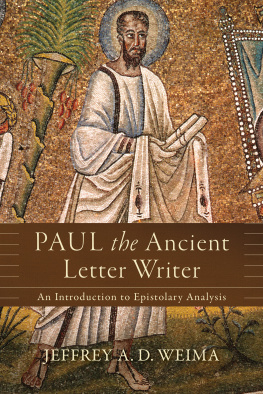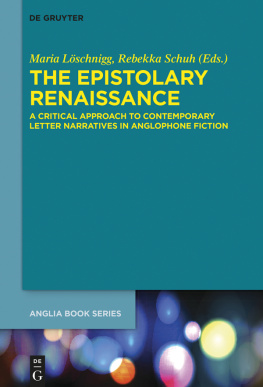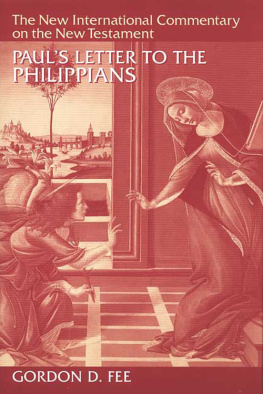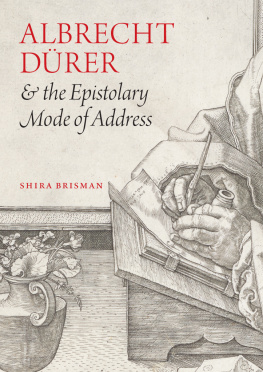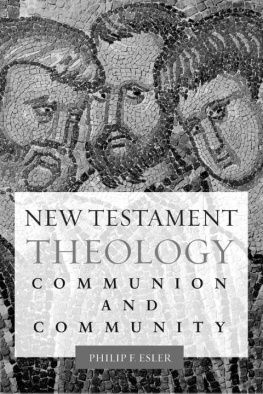Jeffrey A. D. Weima - Paul the Ancient Letter Writer: An Introduction to Epistolary Analysis
Here you can read online Jeffrey A. D. Weima - Paul the Ancient Letter Writer: An Introduction to Epistolary Analysis full text of the book (entire story) in english for free. Download pdf and epub, get meaning, cover and reviews about this ebook. year: 2016, publisher: Baker Publishing Group, genre: Religion. Description of the work, (preface) as well as reviews are available. Best literature library LitArk.com created for fans of good reading and offers a wide selection of genres:
Romance novel
Science fiction
Adventure
Detective
Science
History
Home and family
Prose
Art
Politics
Computer
Non-fiction
Religion
Business
Children
Humor
Choose a favorite category and find really read worthwhile books. Enjoy immersion in the world of imagination, feel the emotions of the characters or learn something new for yourself, make an fascinating discovery.
- Book:Paul the Ancient Letter Writer: An Introduction to Epistolary Analysis
- Author:
- Publisher:Baker Publishing Group
- Genre:
- Year:2016
- Rating:5 / 5
- Favourites:Add to favourites
- Your mark:
- 100
- 1
- 2
- 3
- 4
- 5
Paul the Ancient Letter Writer: An Introduction to Epistolary Analysis: summary, description and annotation
We offer to read an annotation, description, summary or preface (depends on what the author of the book "Paul the Ancient Letter Writer: An Introduction to Epistolary Analysis" wrote himself). If you haven't found the necessary information about the book — write in the comments, we will try to find it.
Paul the Ancient Letter Writer: An Introduction to Epistolary Analysis — read online for free the complete book (whole text) full work
Below is the text of the book, divided by pages. System saving the place of the last page read, allows you to conveniently read the book "Paul the Ancient Letter Writer: An Introduction to Epistolary Analysis" online for free, without having to search again every time where you left off. Put a bookmark, and you can go to the page where you finished reading at any time.
Font size:
Interval:
Bookmark:
2016 by Jeffrey A. D. Weima
Published by Baker Academic
a division of Baker Publishing Group
P.O. Box 6287, Grand Rapids, MI 49516-6287
www.bakeracademic.com
Ebook edition created 2016
All rights reserved. No part of this publication may be reproduced, stored in a retrieval system, or transmitted in any form or by any meansfor example, electronic, photocopy, recordingwithout the prior written permission of the publisher. The only exception is brief quotations in printed reviews.
Library of Congress Cataloging-in-Publication Data is on file at the Library of Congress, Washington, DC.
ISBN 978-1-4934-0579-4
Unless otherwise indicated, all Scripture translations are by the author.
Scripture quotations labeled The Message are from THE MESSAGE. Copyright by Eugene H. Peterson 1993, 1994, 1995, 1996, 2000, 2001, 2002. Used by permission of NavPress. All rights reserved. Represented by Tyndale House Publishers, Inc.
Scripture quotations labeled NIV are from the Holy Bible, New International Version. NIV. Copyright 1973, 1978, 1984, 2011 by Biblica, Inc. Used by permission of Zondervan. All rights reserved worldwide. www.zondervan.com
Scripture quotations labeled NLT are from the Holy Bible , New Living Translation, copyright 1996, 2004, 2015 by Tyndale House Foundation. Used by permission of Tyndale House Publishers, Inc., Carol Stream, Illinois 60188. All rights reserved.
Scripture quotations labeled NRSV are from the New Revised Standard Version of the Bible, copyright 1989, by the Division of Christian Education of the National Council of the Churches of Christ in the United States of America. Used by permission. All rights reserved.
Weima has written a very timely and important book on how to analyze the apostle Pauls letters. A growing number of scholars, myself included, have had serious questions about the over-rhetorization of Pauls letters. Weima presents a useful and helpful alternative in returning to a robust form of epistolary analysis. We may have some differences of opinion on whether there are four or five major parts to the Pauline letter, but we are in agreement that analysis of the epistolary form of Pauls letters is central to their interpretation. I strongly endorse the approach of this book and Weimas attempt to exemplify it, and I think that other interpreters of Pauls letters will benefit as well.
Stanley E. Porter , McMaster Divinity College
Paul the Ancient Letter Writer is an overdue book that needed to be written. Readers of this comprehensive study will no longer be able to escape the reality of Paul having written real letters. Weima shows how the essential components of ancient letters appear in each of the thirteen texts in the New Testaments collection of Pauls letters.
Raymond F. Collins , Brown University
To my parents,
David & Hinke Weima,
who from infancy made known to me the holy Scriptures (2 Tim. 3:15)
To my parents-in-law,
Jan (John) & Dieuwke (Joanne) Zwier,
who even before our marriage welcomed me into their family as a son
Cover
Title Page
Copyright Page
Endorsements
Dedication
Preface
Abbreviations
1. Introduction
2. The Opening
3. The Thanksgiving
4. The Body
5. The Closing
6. Epistolary Analysis in Practice: The Test Case of Philemon
Works Cited
Index of Modern Authors
Index of Scripture and Other Ancient Sources
Index of Subjects
Back Cover
The origin of this book began over thirty years ago. It was in the early 1980s, during my days as a student at Calvin Theological Seminary, when my Old Testament professor, John Stek, first showed me the importance of looking carefully at not just the content of the biblical text ( what the author says) but also the form of the biblical text ( how the author says it). My first reaction was skepticism as he employed the method of literary criticism to the book of Ruth. When Professor Stek applied this same method in a subsequent course dealing with Hebrew poetry and the book of Psalms, I became a bit more convinced about the importance of form and how a formal analysis of the biblical text can aid interpretation. Yet I still failed to see the implications of literary criticism for the interpretation of a different genreletters.
A few years later, as I was working on a PhD degree at the Toronto School of Theology, I took a course with John C. Hurd Jr. dealing with letters in early Christianity. It was then that I began to take seriously the form of Pauls letters and how deviations in the apostles typical or expected letter structure and his skillful adapting of various epistolary conventions were important for a correct reading of his correspondence. This recognition led me to do a formal analysis of Pauls letter closings for my doctoral dissertation, which was later published as Neglected Endings: The Significance of the Pauline Letter Closings (Sheffield: JSOT Press, 1994).
In subsequent years, I published essays on the letter closing of Galatians, the epistolary framework of Romans, and the epistolary conventions in Philemon. The research connected with these publications clearly demonstrated (at least to me) that the method of epistolary analysisthe term commonly used for the literary analysis of lettersprovided rich insights into not just the letter closing but the opening, thanksgiving, and body sections of Pauls letters as well. This conviction compelled me to include a section on literary analysis in my commentary on 1 and 2 Thessalonians for the Baker Exegetical Commentary series, in which I examined the epistolary form and function of each passage before commenting on it more specifically. My teaching of New Testament letters over the past twenty-four years has also long included an introductory unit on how to read an ancient letter.
This brief historical overview reveals how I have moved from my early skepticism to being a strong advocate for the importance of literary criticism in general and of epistolary analysis in particular. The purpose of this book is to introduce the reader to both the method and the interpretative value of epistolary analysis. Although others have written on this method, their treatment of the four major sections of Pauls letters (opening, thanksgiving, body, and closing) and the diverse epistolary conventions found within each of these four sections is too brief. A bigger weakness of previous studies, however, is their tendency to highlight only the form and epistolary conventions of Pauls letters without demonstrating how this knowledge can help us better understand the purpose and content of the apostles writings. By contrast, this book provides numerous examples of the exegetical payoff from detailed epistolary analysis. Merely being able to identify epistolary conventions in Pauls letters is not enough. We must also understand the function of these epistolary conventions and how Paul skillfully uses them to aid his persuasive purposes.
I gratefully acknowledge the help of others in completing this book. Pter Balla, rector and professor of New Testament at Kroli Gspr University in Budapest, and Neil Martin, my former student and current doctoral candidate at the University of Oxford, graciously read the entire manuscript and offered helpful suggestions for its improvement. Wells Turner at Baker did an excellent job of editing the book, saving me from embarrassing errors and enhancing the volumes overall quality. Elisabeth (Betsy) De Vries, my teaching assistant for several years, drafted the various tables found in the book and also compiled the indexes. Calvin Theological Seminary, both its administrators and board of trustees, kindly granted me a sabbatical and a publication leave to focus on the writing of this book. I am most thankful to my wife, Bernice, for her constant support of me and my various ministries outside the classroom; she continues to be my best friend and partner in ministry. Finally, I am pleased to recognize the key role that my parents, David and Hinke Weima, as well as my parents-in-law, John and Joanne Zwier, have played in my life and academic career, and so it is to them that this book is gratefully dedicated.
Font size:
Interval:
Bookmark:
Similar books «Paul the Ancient Letter Writer: An Introduction to Epistolary Analysis»
Look at similar books to Paul the Ancient Letter Writer: An Introduction to Epistolary Analysis. We have selected literature similar in name and meaning in the hope of providing readers with more options to find new, interesting, not yet read works.
Discussion, reviews of the book Paul the Ancient Letter Writer: An Introduction to Epistolary Analysis and just readers' own opinions. Leave your comments, write what you think about the work, its meaning or the main characters. Specify what exactly you liked and what you didn't like, and why you think so.

